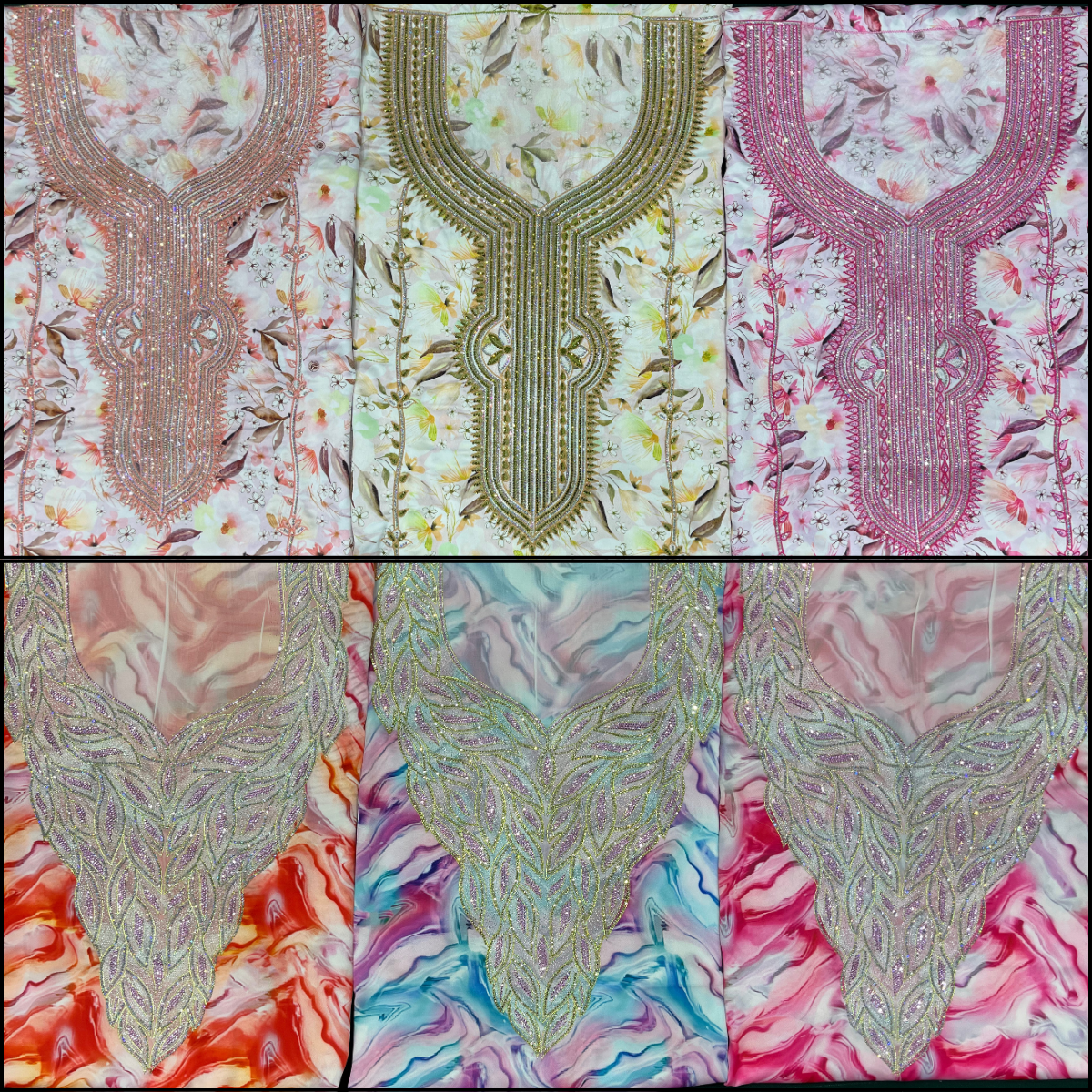
Regarding UAE women’s fashion, few garments capture the grace, elegance, and cultural richness quite like the Emirati mukhawar. As styles evolve and global trends come and go, traditional Emirati dress holds a special place in the hearts and wardrobes of Emirati women. Rooted in heritage yet open to modern interpretations, the mukhawar stands as a beautiful expression of identity, femininity, and tradition.
At SARA, we believe in celebrating this legacy through designs that honour the past while embracing the present. In this blog, we’ll explore the meaning and history of the Emirati mukhawar, its unique design elements, how it’s worn today, and how we at SARA are keeping this treasured garment alive for the modern Emirati woman.
A glimpse into Emirati fashion and cultural clothing
Emirati fashion is a proud reflection of the UAE’s rich cultural heritage. With deep roots in tradition and tribal identity, clothing has always been more than just a matter of style; it’s a symbol of modesty, elegance, and respect. From the flowing abaya to the colourful jalabiya, each piece tells a story of the country’s history and values.
Among these timeless garments, the mukhawar holds a unique status. Often overshadowed by more globally recognised outfits, the mukhawar is a hidden gem within Emirati fashion, especially beloved by women for its intricate detail and cultural significance.
Emirati Mukhawar
The term mukhawar refers to a traditional Emirati dress known for its distinctive embroidery and lightweight fabric. Worn by women across the UAE and wider Gulf region, the Emirati mukhawar has long been a staple of domestic and festive wardrobes.
Historically, the mukhawar served as a daily home dress; modest, breathable, and easy to wear during the hot desert climate. But it wasn’t just practical. Women would adorn it with beautiful hand-embroidered patterns, often made by family members, making each piece a personal and heartfelt creation.
As years passed, the mukhawar transitioned from a purely functional garment to one associated with celebration, family gatherings, and Ramadan evenings. While deeply rooted in tradition, it has gracefully evolved with changing times and tastes.
Key design features of the Mukhawar
The charm of the mukhawar lies in its understated sophistication. Unlike the heavier jalabiya or formal abaya, the mukhawar is typically made from light cotton or linen, making it perfect for the UAE’s warm climate.
Here are some defining features of the ladies' mukhawar design:
Fabrics: Breathable materials like soft cotton, muslin, or voile are commonly used, allowing for comfort throughout the day. SARA’s collections often include blended fabrics that retain the softness of tradition while offering a sleeker modern silhouette.
Embroidery: Traditional embroidery is the soul of the mukhawar. Often stitched around the neckline, sleeves, and hem, the motifs range from floral to geometric patterns, each with symbolic meanings. Gold and silver thread are popular, especially for festive occasions.
Colours: Earthy tones like beige, olive, and cream remain favourites for everyday wear, while deeper hues such as maroon, navy, and emerald green are common for Ramadan and Eid. Lately, pastel palettes have emerged as a modern twist, which we proudly incorporate at SARA.
Silhouette: Loose-fitting and floor-length, the mukhawar offers a graceful drape that aligns with the values of modesty and comfort.
When and how Emirati women wear the Mukhawar
Today, the mukhawar holds a special place in women’s wardrobes across the UAE, not just for its comfort but for its cultural importance.
Many Emirati women wear the mukhawar during:
Ramadan and Eid: These holy occasions are a time for spiritual reflection, family bonding, and dressing with elegance. A beautifully embroidered mukhawar is often chosen for Iftar dinners, family gatherings, and mosque visits.
Family Events and Gatherings: Whether it’s a cousin’s engagement party or a weekend majlis, the mukhawar is a stylish yet respectful choice.
Homewear: Many women still wear simplified versions of the mukhawar at home, blending comfort with heritage.
Pair your mukhawar with delicate gold jewellery for a classic look.
For more modern styling, wear it with soft waves and minimal makeup to let the embroidery shine.
Add a matching headscarf for formal settings or religious events.
As the UAE continues to balance tradition with innovation, the fashion world follows suit. At SARA, we understand that today’s woman values both cultural authenticity and personal style. That’s why our mukhawar UAE collection blends traditional craftsmanship with contemporary aesthetics.
We honour the original ladies' mukhawar design with hand-finished embroidery and premium-quality fabrics, while introducing modern tailoring, colour palettes, and exclusive prints. From minimalist styles with clean embroidery to more elaborate pieces perfect for Eid, our designs are made to fit the many sides of Emirati womanhood.
Why Mukhawar still matters
In an age of fast fashion and ever-changing trends, the Emirati mukhawar endures not just as a garment but as a cultural symbol. It connects generations, weaving together memories of grandmothers sewing late into the night, mothers dressing up for special occasions, and daughters carrying forward the legacy.
For many women in the UAE, wearing the mukhawar is a quiet act of pride, an elegant reminder of who they are and where they come from. At SARA, we believe that fashion should be more than beautiful; it should be meaningful.
Explore SARA’s Mukhawar collection
Whether you’re preparing for a festive season, looking for graceful homewear, or simply want to reconnect with tradition stylishly, the Emirati mukhawar is a wardrobe essential.
We invite you to browse our curated mukhawar UAE collection, where each piece is crafted with love, heritage, and a modern flair. Discover timeless Emirati fashion through soft fabrics, intricate embroidery, and thoughtful design only at SARA.
 Free Shipping
Free Shipping
 Delivery on time
Delivery on time
 100% Secure Payment
100% Secure Payment
Copyright © All right reserved Sara Arabia (SARA PLAZA GEN. TRAD. & CONT. CO. WLL.).



Leave a Comment
Please note, comments must be approved before they are published